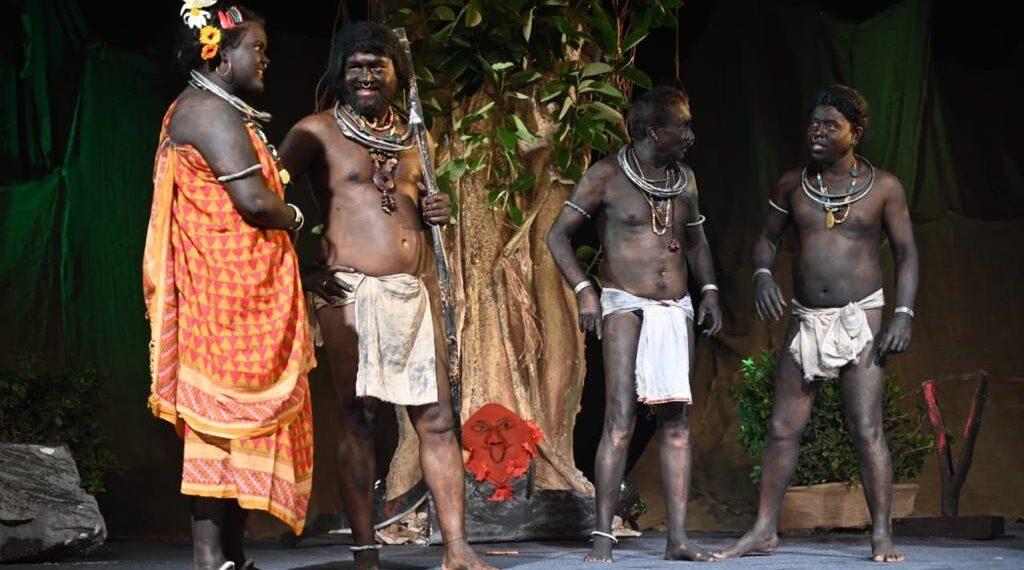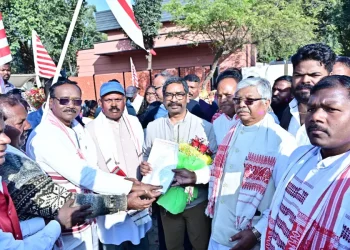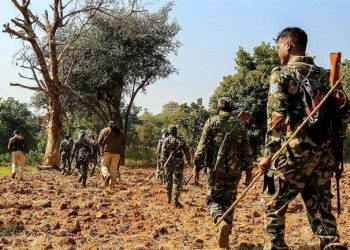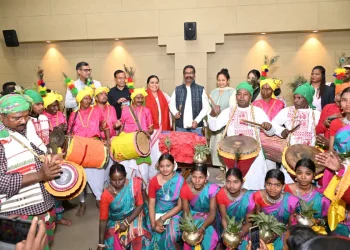Cuttack/Bhubaneswar
They never flaunt any taglines like trained professionals. But, togged up as tribals, their dramatic presentation on stage in a mix of Odia and ethnic dialect instantly strikes a chord with the audience.
‘They’ are a group of former and present HAL employees who have closed ranks under the Sunabeda-based Utkal Sanskrutika Parishad (USP) to give vent to their yen for stage plays.
The upshot is ‘Barang Nibas Bhala Rana Khetra Re’ (BNBRKR). Whenever and wherever staged, BNBRKR—a throwback to the hoary past when aboriginals posed a bulwark against any kind of ‘alien incursion’—is a hit with theatre buffs.
Shaped up about 56 years ago with many members and artistes making their entries and exits from its fold, the USP has enacted over 100 plays till now. But BNBRKR that its 12 artistes stage now warms the cockles of theatre lovers’ hearts inside and outside Odisha.
“Eight out of the 12 artistes are a phalanx of HAL’s superannuated and present employees. Even the father of one of the two lady artistes, who plays role of heroine Para, is an employee of SBI on the premises of the aeronautics behemoth,” USP’s joint secretary Manasha Dash, a present HAL employee who plays Padu in BNBRKR, informs The Indian Tribal.
“Dolled up as tribals, the artistes portray an indigenous lifestyle that is steeped deep in simplicity and solidarity, downed in worn-out dogmas and doctrines, tangled in taboos and traditions, and mired in ignorance and alcoholism,” he explains.
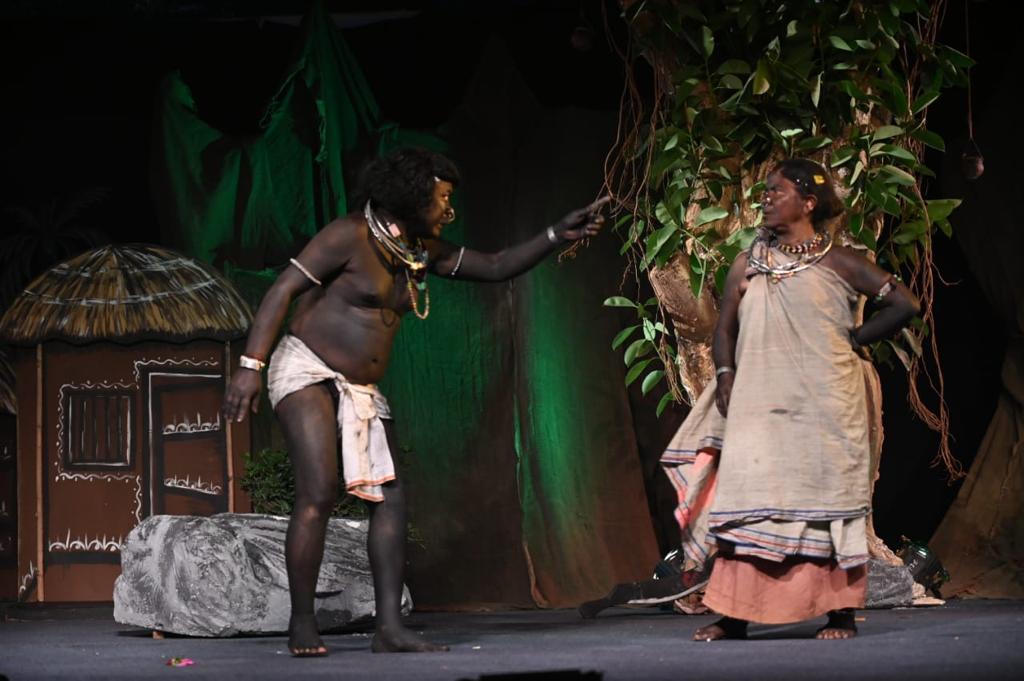
When the USP first staged BNBRKR during the Lok Natak Mahotsav (LNM) in Rourkela in 1979, it was crowned with six awards in different categories. It was then enacted in Koraput in 1980. It took part in the inter-state drama competition in Jatni in 1981 and was adjudged as the third best production.
Then it slipped into hibernation to have its phoenix rise on the stage in Sunabeda in 2016 on the occasion of Utkal Diwas (April 1) to mark the Golden Jubilee of USP. Then it was staged consistently in about eight places including state capital Bhubaneswar and was flooded with much acclaim.
Pepped up by rave reviews, the cultural outfit made a dash to Delhi to showcase its dramatic kaleidoscope at Bharat Ranga Mahotsava (BRM), organized under the National School of Drama (NSD) in February last. While theatre lovers in the national capital went gaga over it, Argus-eyed connoisseurs drowned it with praises.
“BNBRKR creatively and congruously synthesizes dramatic moments, music and performance,” says Director of Natya Chetna, Khorda, Subodh Patnaik, one in the NSD Jury appointed before BRM. “It was one among 80 plays shortlisted out of about 800.”
Meticulous observation of tribal attire, ornaments, lifestyle and physical appearance was the exercise to infuse a realistic climate into theatre environments. “Characters’ aluminum ornaments look like Bondas’. But their ensembles, the facsimiles of Parajas’, set their sartorial makeup,” says USP’s former secretary and Odisha Sangeet Natak Akademi awardee Natyashree Sudam Bosoyi, who retired from HAL some eight years ago.
“We took around one month to make the characters look tribal after marathon session with experts and tribals. Besides, we took much time in persuading our two female actors who were initially reluctant to pose semi-clad on the stage,” adds Sudam, who is not only director of BNBRKR, but also plays Mukhiya in it.
The play’s dialogues are a mix of Odia and Paraja dialect that adds another realistic dose to its make-believe ethnic scenario. “As I worked as an Odia professor in South Odisha for 22 years, I could easily pad up the dialogues with Paraja dialect,” says Prof. Ramesh Chandra Das, the writer of BNBRKR that fetched him Odisha Sahitya Akademi award in 2017 years after it was staged in different districts.
“Demsa Dance with Changu and flute as its only musical instruments sets it tone at its very inception,” says play’s music director and former composer of All India Radio, Jeypore, Guru Prasad Dash.
When asked as to how actors perfect Demsa-steps, actor Manasha says, “As we work for HAL in Sunabeda, we watch Demsa frequently that enables us to learn its intricacies easily. However, one Sukumar who earlier played Changu for us has brushed up our movements.”

The play’s three scenes conjure up the most intense moments. The one depicts how teacher’s radio creates a flutter among tribals who think it to be a diabolic alien. The second projects the teacher proposing to marry Para. The third dramatizes the imminent sacrifice of the doctor and the teacher. Teacher is tribals’ ‘culprit’, for he defiles Para that leads her near ostracization. Doctor faces the same fate for his audacity to save the teacher. However, their lives are spared after a hearing impaired tribal Chaitan gets ready to go into wedlock with the forsaken Para.
“The play also focuses on tribals’ taboos, superstitions and alcoholism. For example, when teacher comes in, tribals reject him, for their deities Dangal and Daru, they believe, negate education’s validity in their life. Similarly, when doctor steps in, they boo him down, as they repose immense faith in traditional healer Disari,” says artiste Deepak Rout, also an HAL employee.
On the whole, Ramesh Parida, one of the theatre lovers in Rourkela, sums it up: The play incorporates an element of ‘willing suspension of disbelief’ to portray the ethnic life that has now eclipsed into oblivion.











